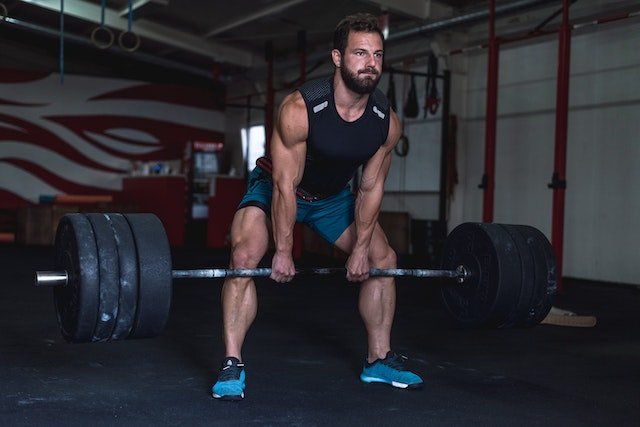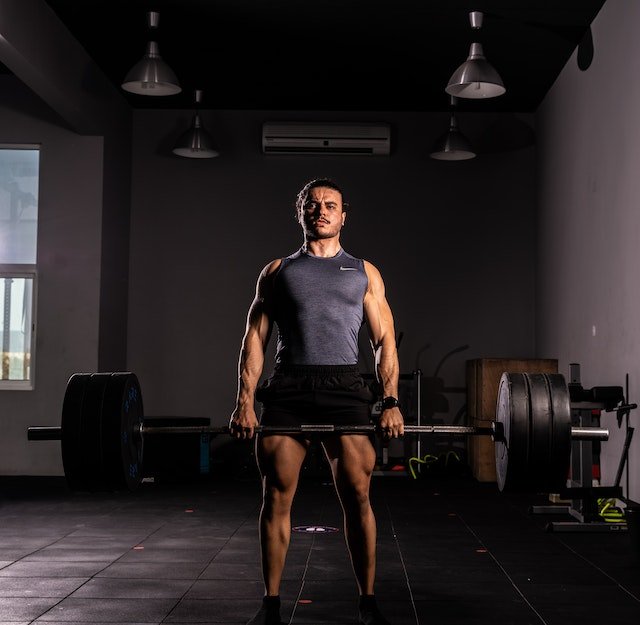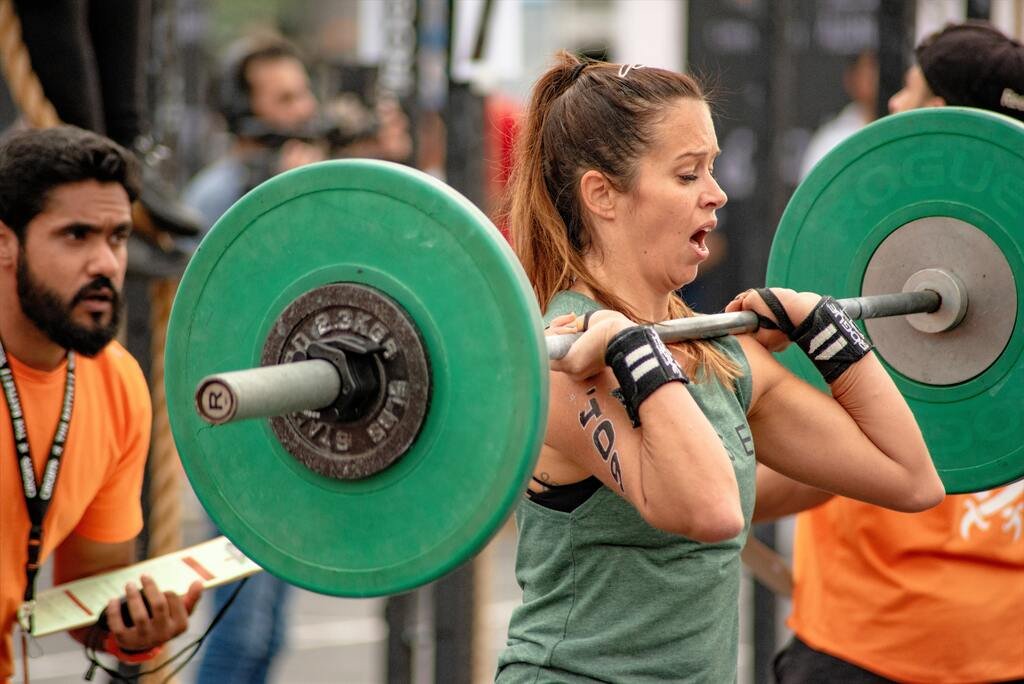
Why Do My Forearms Hurt When I Deadlift? Beat That Pain To Make Gains
Deadlifting is a great way to strengthen your entire body, but people experience pain in their forearms when they do it.
It can be frustrating to deal with this pain as you don’t have the problem with any other exercises, and you may be wondering what is causing it.
There are a few possible reasons for this pain in your forearms, but why is it happening?
If this is you, don’t worry as we’ll explore the possible reasons why your forearms hurt when you deadlift and offer some tips on how to prevent or reduce this pain.
Why do my forearms hurt when I deadlift?
One possible reason for this pain is that you are gripping the bar too hard. When you grip something too tightly, it can cause strain on your forearm muscles and tendons, which can lead to pain. If lifting is new to you, your technique may need some work or your forearms might not be strong enough in comparison to the rest of your body to hold the load. Try using a hex bar or a different grip, and if that doesn’t work, chalk or straps may help. If you are using an overhand grip, your forearms may not be strong enough to hold the weight of the bar, which can lead to pain. However, if you use an underhand grip or one of each, the weight will be distributed evenly across your forearm muscles, which can help to prevent pain. Try different grips to see what works best for you. Another thing to consider is whether or not you are fatigued from other exercises. If you have been lifting weights for a long time, your forearm muscles may be tired from all of the other exercises you have been doing. How many reps are you doing at once? If you are doing too many, your forearms may hurt and be tired. Finally, it is possible that you are overtraining. If you are lifting weights too often, your body may not have enough time to recover, which can lead to pain in your forearms.
There are a few things you can do to prevent or reduce this pain in your forearms. Let’s take a look at some of the reasons you get forearm pain and how you can get back to working out pain-free as soon as possible.
Is lifting new?
If you are new to lifting, your muscles may not be used to the strain of gripping a barbell. Over time, your muscles will get stronger and you will be able to grip the barbell more easily.
In the meantime, try using a hex bar or a different grip. If that doesn’t work, chalk or straps may help.
It can take a little time for your body to adjust to lifting, so be patient and give your muscles time to adapt.
Your form might also be partly to blame if you are new to lifting. As you become more accustomed to the exercise, your form will improve and you will put less strain on your muscles.
When you start lifting it’s natural to jump head-first into working out and lifting what you can, but in doing so you may overlook the fact your technique is poor or needs attention, this is why it’s important to work on this first and foremost to help prevent bad habits and injury in the short and long term.
Create small, easily achievable goals to avoid frustration and increase your chance for success when you start working out.
Lifting heavy load
If you are lifting a heavy load, your muscles may not be able to handle the weight. This can lead to pain in your forearms.
This is one of the biggest issues people have when they begin lifting, they try to go too heavy too soon without giving their muscles time to adapt which can lead to injury.
If you are lifting a heavy load, try using a hex bar or a different grip. If that doesn’t work, chalk or straps may help.
You may also want to consider reducing the amount of weight you are lifting. Once your muscles get stronger, you can increase the amount of weight you lift.
Focus on quality over quantity. It’s better to do a few reps with good form than to try to lift too much and risk injury.
Keep a log of your progress and set small but manageable goals (as mentioned above) when you start lifting to help you track your progress and ensure you are progressing safely.

Gripping too hard
One possible reason for forearm pain is that you are gripping the bar too hard. When you grip something too tightly, it can cause strain on your forearm muscles and tendons, which can lead to pain.
Not only that but you will burn out your muscles quicker by gripping too tightly, meaning your workout will be less effective overall.
Try to relax your grip and focus on using your muscles, not your hands, to lift the weight. Ensure that you have a good grip without gripping too tightly and tiring out your muscles.
You need to make sure you grip the bar with conviction but not to the point you have white knuckles like on a roller coaster. If you doubt your grip, try using chalk or straps.
It may take some time to get used to using the right amount of grip, but once you find the sweet spot, you will be able to lift more weight and put less strain on your muscles.
Wrong grip
If you have the wrong kind of grip width, you may experience discomfort in your forearms because your muscles and tendons are not being used properly.
Your grip width should be about shoulder-width apart. This will allow you to use your muscles effectively and minimize strain on your tendons, as having too narrow or wide a grip will make the exercise harder than it needs to be.
If your grip isn’t comfortable, play around with the width until it feels good.
It may take some trial and error to find the perfect grip width, but once you do, you will be able to lift more weight and put less strain on your muscles.
Related: Why do I feel hamstring curls in my calves?
Exercise selection
The type of exercises you are doing may also be a contributing factor to your forearm pain.
Some exercises put more strain on your muscles than others, which can lead to pain if you are not used to the exercise.
If you are doing other exercises before you deadlift, such as bicep curls, you may be putting too much strain on your muscles and not giving them time to recover. They might be fatigued from the other exercises, which can lead to pain when you deadlift.
If you are planning on deadlifts, then it would be wise to change the order of your exercises so that you are not doing other exercises that fatigue your muscles before you deadlift.
In general, it’s best to focus on compound exercises that work multiple muscle groups at the same time first in your routine. These exercises are more efficient and will help you get stronger overall and doing them first will help you to get the most out of the exercise.
It’s fine to warm up for deadlifts with other exercises as long as you arent fatiguing your muscles too much by going too heavy.
Epicondylitis and tendonitis
One potential cause of forearm pain is epicondylitis and tendonitis, which are both conditions that involve inflammation of the muscles and tendons around the elbow.
Epicondylitis is more commonly known as tennis elbow, and it is caused by repetitive motions that put strain on the muscles and tendons around the elbow.
Tendonitis is a similar condition but it affects the tendons rather than the muscles. It can be caused by repetitive motions or overuse of the muscles and tendons around the elbow.
Both of these conditions can be treated with rest, ice, and over-the-counter medication such as ibuprofen.
It is fairly common in people who do a lot of lifting, as the repetitive motions can lead to inflammation.
If you have epicondylitis, it’s important to rest your elbow and avoid any activity that aggravates the condition and to see a doctor so that they can diagnose and treat the condition.
To ease the symptoms of tendonitis, it is important to take a break from activities that put strain on your forearm and avoid anything else that might make the condition worse.

Carpal tunnel syndrome
Carpal tunnel syndrome is a condition that can cause forearm pain. It occurs when the median nerve, which runs from your forearm to your hand, becomes compressed.
This can be caused by repetitive motions of the wrist, such as typing or using a mouse, or it can occur due to an injury or other condition that puts pressure on the nerve.
Carpal tunnel syndrome can be treated with rest, ice, and over-the-counter medication.
If the symptoms are severe, you may need to see a doctor for treatment. In some cases, surgery may be necessary to relieve the pressure on the nerve.
This is an extreme measure and is only necessary in severe cases where other treatments have failed.
Questionable forearm strength
If you are new to lifting, your technique may need some work or your forearms might not be strong enough in comparison to the rest of your body to hold the load.
If this is the case look to reduce the weight you are trying to lift to the point you can complete the desired number of reps and sets you are looking to do without your forearms feeling the strain.
As mentioned previously, you can try using straps or chalk to see if it helps take the pressure off your forearms, as you may find that when you reduce the weight the exercise is no longer challenging to you.
If this is the case look to increase the number of reps you do or increase the time under tension until your forearms catch up with the rest of your body.
The other thing to consider is that your forearms might be able to handle the weight you are trying to lift, but your grip strength is inferior, which will make your forearms pick up the slack.
Take time to see which one of these you are struggling with and take the appropriate action required to fix the issue.
Related: Why does the squat bar hurt my neck so much?
Build up strength with farmers’ walks and kettlebells
One thing you can do to improve not only your grip strength but your forearm strength would be to do farmers’ walks and get swinging those kettlebells!
Some kettlebell exercises can be particularly beneficial for strengthening your forearms and grip, as you often have to hold the weight in your hands for an extended period of time.
Farmers’ walks are great for improving grip strength, as they require you to hold heavy weights in your hands and walk around. This is great for building strength in your hands, wrists and forearms.
Both farmers’ walks and kettlebells are great ways to build strength and power in your arms and hands, but they are also great for improving your overall core strength and stability.
So if you think your grip or forearm strength is holding you back, give them a try and see how they help.
Are you doing too many reps?
If you’re doing too many reps, it can also cause your forearms to hurt.
When you do a lot of reps, you are putting strain on your forearms to hold the weight, and if you’re doing too many reps, it can lead to fatigue and eventually pain.
To avoid this, make sure to keep your reps at a manageable number and take breaks if you start to feel any fatigue or soreness in your forearms.
Make sure there’s an adequate gap between sets, and don’t be afraid to lower the weight if you need to, as trying to do too many reps with a heavier load will burn your forearms out in no time.
If you are going to be doing more reps, reduce the weight considerably to ensure your forearms don’t take too much strain.
Overtraining and recovery
Overtraining is also a problem that can cause your forearms to hurt.
If you are pushing yourself too hard, it can cause your muscles and tendons to become overworked, which can lead to pain.
To prevent this from happening, make sure you are taking adequate rest days, stretching and foam rolling your muscles, and keeping your intensity under control.
If you are lifting heavy weights, make sure you are getting enough rest between sets and taking short breaks if necessary.
Listen to your body and if you feel any strain or discomfort in your forearms, take a break or reduce the weight.
Make sure you are getting enough sleep and eating enough to fuel your body, as this will ensure you are able to recover properly and stay injury free.
Stretching and warming up
Stretching and warming up properly can also help you to prevent pain in your forearms.
Take some time to stretch out your elbows, wrists, and forearms before you start lifting.
Stretching helps to improve range of motion in your joints and muscles, which can help to prevent injury.
It’s also important to warm up before lifting as it helps to get your muscles and joints prepared for the exercise you are about to do.
Attempting to lift when your muscles are cold can lead to a higher risk of injury, so make sure you are properly warmed up before starting your session.
A few minutes of dynamic stretching or light cardio can help to get your body warmed up and ready for a good workout.
Related: Why Do Some People Skip Leg Day?
Final thoughts…
Pain in the forearms when deadlifting could be a sign that your technique needs some work, or it could be a sign of overtraining or inadequate recovery.
To prevent this from happening, make sure you are using the correct technique, taking enough rest days, warming up and stretching properly, and listening to your body.
If you are still experiencing pain in your forearms, it may be a sign of an underlying issue which needs to be addressed by a professional. Don’t ignore the pain and seek medical advice if necessary.
Overall, take care of your body, listen to it, and make sure you are doing the right things to prevent injury.
Have you experienced this problem? Let me know in the comment section below.


